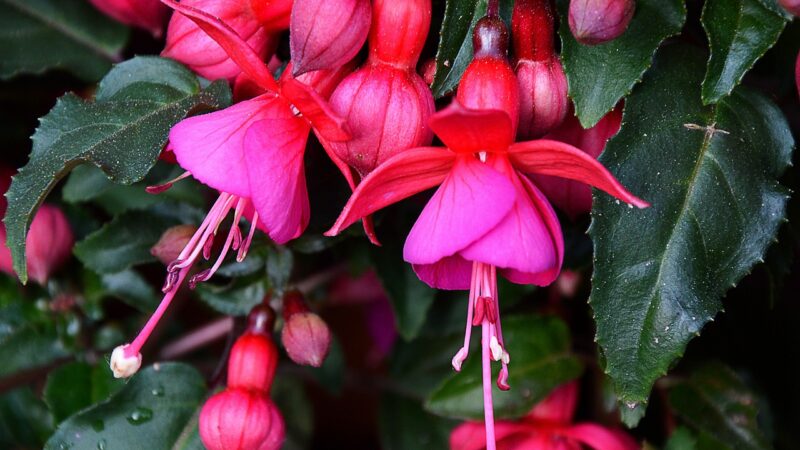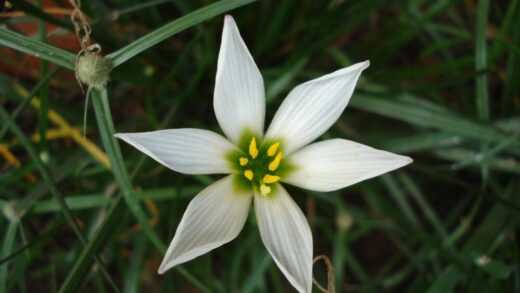Pruning and cutting back of fuchsia

The practices of pruning and cutting back are fundamental to cultivating a fuchsia that is not only healthy and well-shaped but also prolific in its blooming. Far from being an act of harm, this deliberate and strategic removal of plant material is a vital intervention that directs the plant’s energy towards desirable growth. Fuchsias produce their flowers on new wood, meaning that the growth from the current season is what will bear the blossoms. Therefore, regular pruning is essential to continuously stimulate the production of these new, flower-bearing shoots. Without it, a fuchsia can become woody, sparse, and produce significantly fewer flowers.
The primary reason for pruning is to encourage a bushy, well-branched structure. When the growing tip of a stem is removed, it eliminates the source of a hormone called auxin, which suppresses the growth of lateral buds further down the stem. Once this apical dominance is removed, the dormant buds along the sides of the stem are stimulated into growth, each one producing a new branch. Since each of these new branches will ultimately produce flowers at its tip, this process effectively multiplies the potential number of blooms on the plant.
This formative pruning, often referred to as ‘pinching’ or ‘stopping’, should begin when the fuchsia is a very young plant. Once a new shoot, whether on a rooted cutting or a developing plant, has produced two or three pairs of leaves, the very tip of the shoot should be pinched out with fingertips or snipped off with clean scissors. This will encourage two new shoots to grow from the leaf axils below the pinch. This process can be repeated on the subsequent new shoots, leading to an exponential increase in the number of growing tips and a dense, compact plant.
While this pinching delays the onset of the first flowers, as the plant is putting its energy into vegetative growth, the eventual payoff is a much more spectacular and prolonged display. The plant will be covered in a profusion of blooms rather than having just a few flowers on the ends of long, unbranched stems. This foundational shaping in the early stages of the plant’s life is the key to creating the beautiful, cascading specimens that are so highly prized in hanging baskets and containers.
Seasonal pruning for health and structure
Beyond the initial pinching and shaping, fuchsias benefit from more substantial pruning at specific times of the year. One of the most important of these is the ‘hard prune’ that is typically carried out in late autumn or early spring. This is particularly crucial for plants that are being prepared for overwintering in a dormant state. This process involves cutting back all the main stems of the plant by at least half, and sometimes by as much as two-thirds, creating a compact, woody framework.
More articles on this topic
This hard pruning serves several important purposes. Firstly, it drastically reduces the size of the plant, making it much easier to store in a limited space over the winter. Secondly, it removes all the soft, leafy growth that could be a potential site for pests and diseases to harbour during the dormant period. Finally, and most importantly, it sets the stage for the following season’s growth. When the plant awakens in spring, it will produce a multitude of fresh, strong shoots from this pruned framework, resulting in a completely rejuvenated and vigorous plant.
In the early spring, as the plant is brought out of dormancy and begins to show signs of new life, another opportunity for pruning presents itself. This is the time for a ‘spring clean-up’ prune. The plant should be carefully inspected, and any stems that are dead, damaged, or diseased should be cut back to healthy wood. Any weak or spindly shoots that may have appeared should also be removed. This spring pruning refines the shape established by the autumn prune and ensures that the plant’s energy is directed only into strong, healthy growth.
Throughout the growing season, maintenance pruning should continue. This involves the regular removal of any spent blooms, a practice known as deadheading, to encourage continuous flowering. It also includes removing any leaves that are yellowing or showing signs of disease, which helps to maintain plant health and hygiene. If any branches become broken or grow in an awkward direction that spoils the overall shape of the plant, they can be selectively pruned out at any time during the summer.
Techniques for making the right cut
The way in which a pruning cut is made is just as important as deciding where to cut. Using the right tools is essential; for the soft tips involved in pinching, fingertips are sufficient, but for thicker, woodier stems, a clean, sharp pair of secateurs or pruning shears is necessary. A clean cut will heal more quickly and is less likely to become a point of entry for diseases than a ragged tear made with a dull blade. It is also good practice to sterilize the pruning tools with alcohol or a disinfectant solution, especially when moving between different plants, to prevent the spread of pathogens.
More articles on this topic
When pruning back a stem, the cut should be made just above a leaf node, which is the point on the stem where a pair of leaves is or was attached. Within the axil of these leaves are dormant buds, and making the cut just above this point will encourage these buds to activate and grow. The cut should be made about 5 to 10 millimeters above the node and should be angled slightly, sloping away from the buds. This allows any water to run off, rather than collecting on the cut surface and potentially promoting rot.
It is important to understand the plant’s natural growth habit and to prune in a way that enhances it. For trailing fuchsias, the goal is to encourage long, flower-laden stems, so pruning might focus on creating a dense central plant from which these trails can emerge. For upright, bush-type fuchsias, the aim is to create a well-rounded, multi-stemmed shrub. Pruning should aim to create an open framework, removing any branches that are crossing or rubbing against each other, which can create wounds and improve air circulation within the plant’s canopy.
After any significant pruning, especially the hard prune before winter or the spring tidy-up, it is important to adjust the plant’s care routine accordingly. A plant with significantly less foliage will require much less water than it did when it was in full leaf. Watering should be reduced until vigorous new growth appears, at which point it can be gradually increased. Similarly, fertilization should be withheld until the plant has clearly begun to grow again, as the newly forming roots cannot take up the nutrients and could be damaged by the fertilizer salts.



















